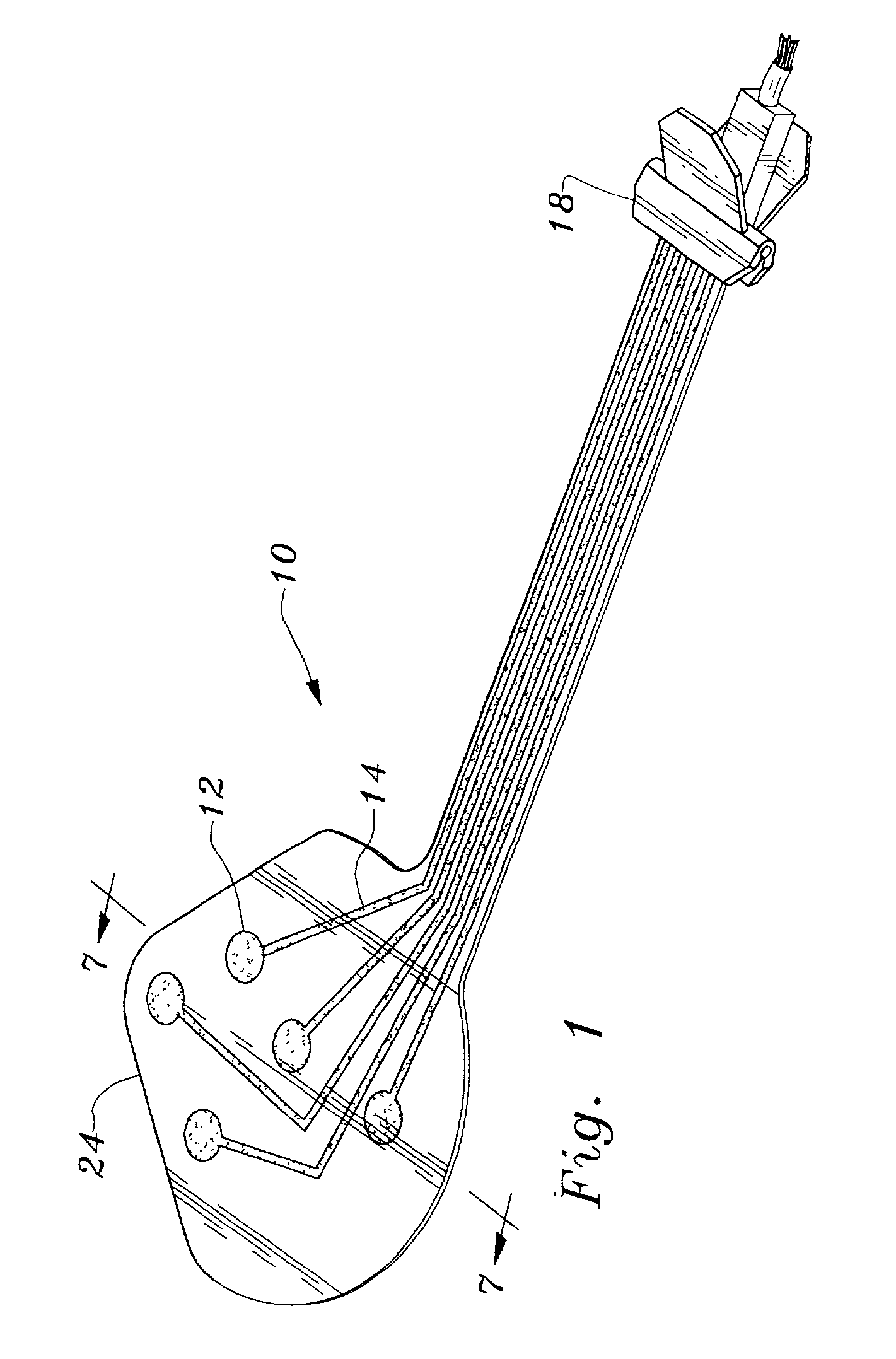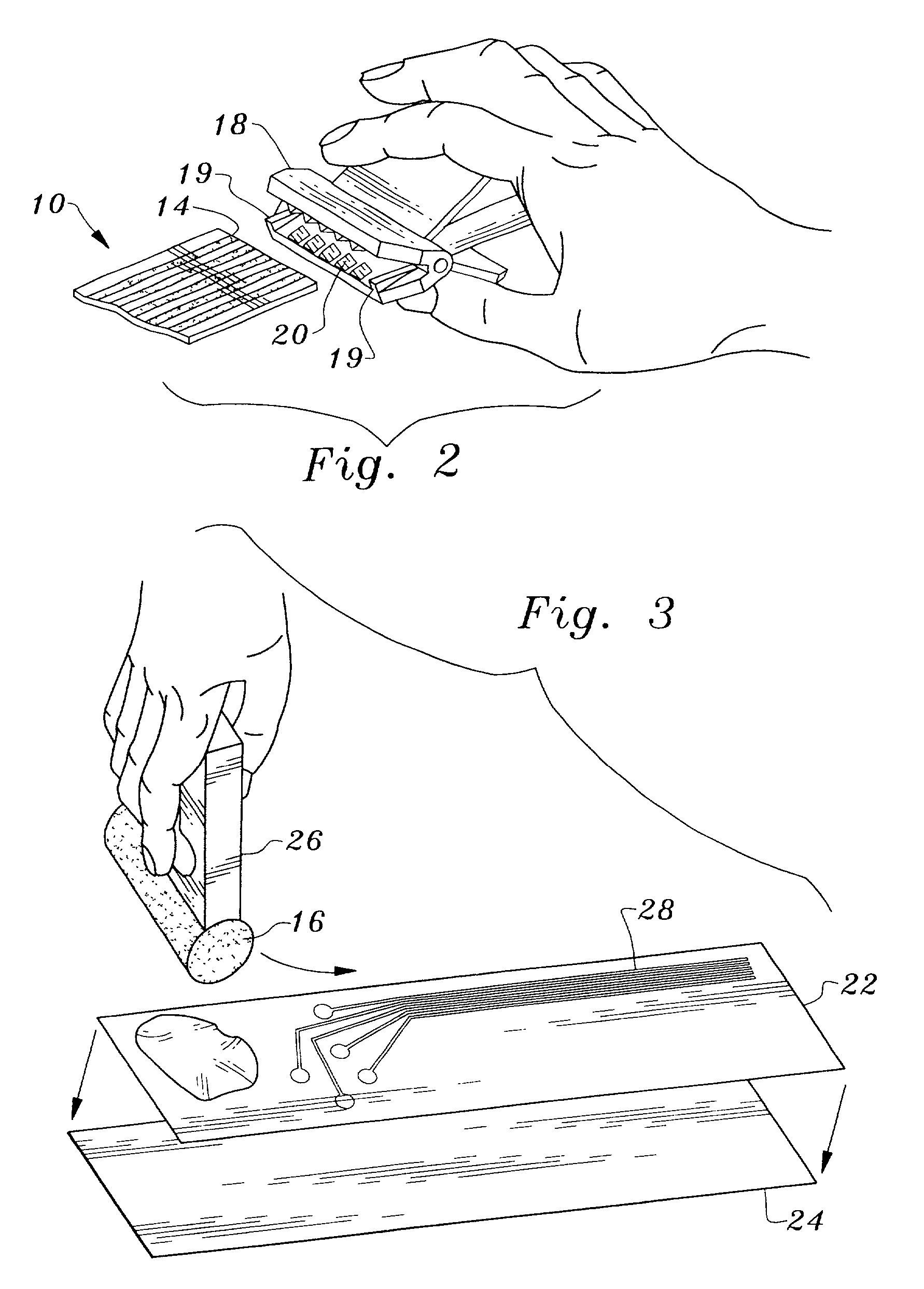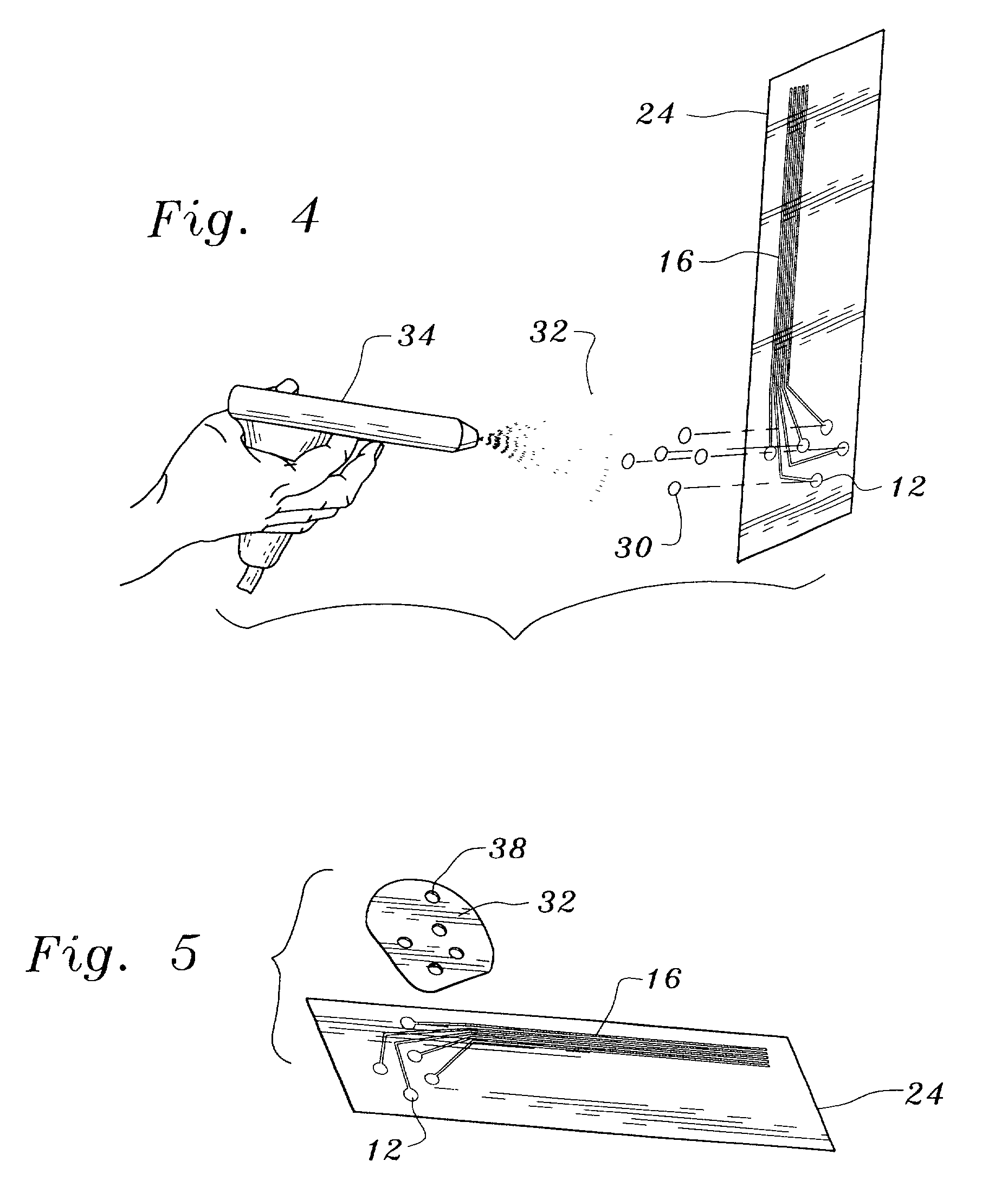Electrode assembly and method for signaling a monitor
a technology of electrodes and monitors, applied in the field of electrode assembly and method for signaling a monitor, can solve the problems of impracticality of devices for patients under anesthesia, patient under anesthesia may not have had reliable eye movements or even any purposeful eye movements, etc., and achieve the effect of quick and accurate placement of electrodes
- Summary
- Abstract
- Description
- Claims
- Application Information
AI Technical Summary
Benefits of technology
Problems solved by technology
Method used
Image
Examples
Embodiment Construction
[0071] Considering the drawings, wherein like reference numerals denote like parts throughout the various drawing figures, reference numeral 10 is directed to a two-muscle electrode assembly according to the present invention. Referring now to FIG. 1, an electrode assembly 10 is shown engaged with spring biased signal input clamp 18. Leading from electrode contact points 12 are electrical connecting paths 14 which carry any signal received by electrode contact points 12 to spring biased signal input clamp 18. The electrode contacts points 12 and electrical connecting paths 14 are disposed upon flexible layer 24. Flexible layer 24 can be made from any of a number of flexible plastic substrates. Depending on the type of plastic used, the thickness of the flexible layer can vary from 1 mil to 3 mil, preferably being 2 mil for preferred plastic. A preferred embodiment of electrode assembly 10 uses one type of plastic that is a combination of vinyl and mylar plastics. Going on now to FIG...
PUM
 Login to View More
Login to View More Abstract
Description
Claims
Application Information
 Login to View More
Login to View More - R&D
- Intellectual Property
- Life Sciences
- Materials
- Tech Scout
- Unparalleled Data Quality
- Higher Quality Content
- 60% Fewer Hallucinations
Browse by: Latest US Patents, China's latest patents, Technical Efficacy Thesaurus, Application Domain, Technology Topic, Popular Technical Reports.
© 2025 PatSnap. All rights reserved.Legal|Privacy policy|Modern Slavery Act Transparency Statement|Sitemap|About US| Contact US: help@patsnap.com



